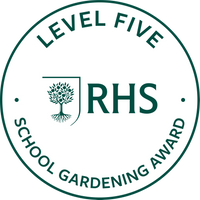Design and Technology
Curriculum Intent:
Through the study of design and technology, children at Village Schools Partnership combine practical skills with an understanding of aesthetic, social and environmental issues. Design and Technology helps all children to become informed consumers and potential innovators. Design and Technology assists children in developing a greater awareness and understanding of how everyday products are designed and made for the target audience in order to gain practical skills to solve problems in everyday life.
Implementation:
In our schools we follow the ‘Design, Make, Evaluate’ approach to the teaching of D&T, as outlined in the National Curriculum Programmes of Study document. To support our D&T teaching we use the D&T Association Projects on a Page which sequences the curriculum in a progressive way to enable the children to acquire the knowledge and skills they need as they move through their school.
During D&T, children are encouraged to be inquisitive about the way products work. We encourage both asking and answering questions in order to deepen children’s understanding of products and product design.
They will use market research to inform their designs and, as they move up through the school, will be encouraged to draw detailed designs and make prototypes in order to refine their designs before creating their final piece.
Whilst making their products, staff will guide them through the technical skills they will require, modelling good practice and highlighting safety considerations with the children.
Through the evaluation stage of our ‘Plan, Make, Evaluate’ approach, children are encouraged to reflect upon their final products, considering how they could have altered their design or techniques to impact the overall appearance and usability of their product. Throughout a child’s school journey skills will be built on and revisited to ensure expertise are refined
Impact
In order to ascertain the impact of the intent statement above the subject leader regularly monitors the Design and Technology curriculum using the tasks outlined below;
- Conference pupils of all ages regularly about their learning in D&T, specifically the skills they have acquired within each unit.
- Study examples of designs, finished products and evaluations to elicit the quality.
- Look at teachers planning and children’s books to measure how well children are being prepared for innovators of the future.
- Observing D&T lessons by focussing on children’s acquisition of skills.




